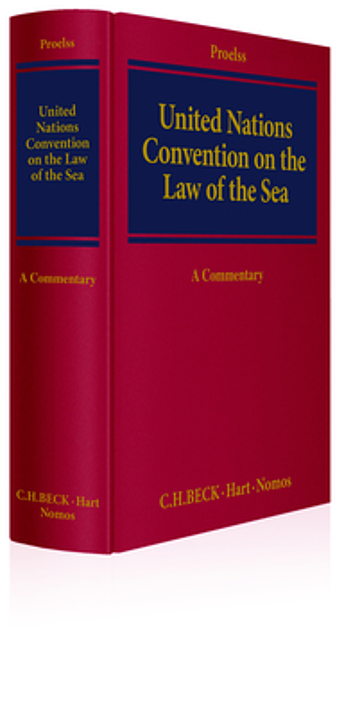englischThe United Nations Convention on the Law of the Sea (UNCLOS) entered into force in 1994. Meanwhile it has been ratified by about 160 states, including all the Member states of the EU and the EU itself. The Convention defines the rights and duties of states with regard to the use of the seas. UNCLOS consolidates customary international law and various Conventions previously adopted by the international community. This Treaty, the most comprehensive ever concluded, is often referred to as “the constitution for the seas”. The Commentary employs a systematic methodology whereby each provision is examined and analysed element by element. The issue of the suitability of the Convention to deal with the challenges facing the modern law of the sea, such as the exploration and exploitation of non-mineral resources or the protection of the marine environment in general, occupies a central editorial focus of this work.
The Commentary covers all major parts of the Convention:
Part I. Introduction
Part II. Territorial sea and contiguous zone
Part III. Straits used for international navigation
Part IV. Archipelagic states
Part V. Exclusive economic zone
Part VI. Continental shelf
Part VII. High seas
Part VIII. Regime of islands
Part IX. Enclosed or semi-enclosed seas
Part X. Right of access of land locked states to and from the sea and freedom of transit
Part XI. The area
Part XII. Protection and preservation of the marine environment
Part XIII. Marine scientific research
Part XIV. Development and transfer of marine technology
Part XV. Settlement of disputes
Part XVI. General provisions
Part XVII. Final provisions
Das 1994 in Kraft getretene UN-Seerechtsübereinkommen (United Nations Convention on the Law of the Sea–UNCLOS) ist mittlerweile von über 160 Staaten ratifiziert worden, einschließlich aller EU-Mitgliedstaaten und der EU selbst. Wie es in seiner Präambel heißt, dient das Übereinkommen dazu, "unter gebührender Berücksichtigung der Souveränität aller Staaten eine Rechtsordnung für die Meere und Ozeane zu schaffen, die den internationalen Verkehr erleichtern sowie die Nutzung der Meere und Ozeane zu friedlichen Zwecken, die ausgewogene und wirkungsvolle Nutzung ihrer Ressourcen, die Erhaltung ihrer lebenden Ressourcen und die Untersuchung, den Schutz und die Bewahrung der Meeresumwelt fördern".
Das Übereinkommen, das das Recht der Meere umfassend regelt, wird häufig als die "Verfassung der Meere" bezeichnet. Ein Schwerpunkt dieses Kommentars wird auf die Wechselwirkung zwischen dem Übereinkommen und der Europäischen Rechtsordnung gelegt, z.B. auf dem Gebiet der Vermeidung oder Verminderung der Umweltverschmutzung oder der gerechten Verteilung natürlicher Ressourcen.
Der Kommentar behandelt alle Teile des Übereinkommens:
- Küstenmeer und Anschlusszone
- Meerengen, die der internationalen Schifffahrt dienen
- Archipelstaaten
- Ausschließliche Wirtschaftszone
- Festlandsockel
- Hohe See
- Ordnung der Inseln
- Umschlossene oder halbumschlossene Meere
- Recht der Binnenstaaten auf Zugang zum und vom Meer und Transitfreiheiten
- Das Gebiet
- Schutz und Bewahrung der Meeresumwelt
- Wissenschaftliche Meeresforschung
- Entwicklung und Weitergabe von Meerestechnologie
- Beilegung von Streitigkeiten
- Allgemeine Bestimmungen
- Schlussbestimmungen
Vorteile auf einen Blick
- umfassender Artikel-für-Artikel Kommentar
- Fokus auf Europäische Aspekte des Übereinkommens
- internationale Autorenschaft
Zielgruppe
Das Werk richtet sich sowohl an die Wissenschaft als auch die Praxis des Seerechts in Kanzleien, Unternehmen, Verbänden und Behörden.


